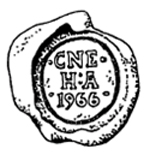 Annual Conference and Meeting
Annual Conference and MeetingCouncil for Northeast Historical Archaeology
Connecting People and Places
Utica, NY October 21-23, 2011RECENT UPDATES:
> Online registration now closed. More
> Updated program posted. More> Bioarchaeology Workshop added. More
About the Conference
The 45th annual meeting of the Council for Northeast Historical Archaeology will take place in Utica, New York October 21-23, 2011. Centrally located to many of the major cities in the northeast and eastern Canada, the Utica area is rich in historical sites, world-class museums, reasonably-priced hotels and restaurants, and wonderful Adirondack scenery. The fall foliage will be at its peak during the conference, adding to the splendor of the region.
Utica is easy to get to – just off of Exit 31 of the New York State Thruway, a five-hour drive from New York City, Boston, Philadelphia, and Montreal. The two closest major airports are at Syracuse (60 miles west) and Albany (95 miles east). Amtrak also serves Utica with four trains a day from New York City.
The conference theme this year is “Connecting Peoples and Places.” This theme reflects the Mohawk Valley’s many layers of history, especially Utica’s role first as a portage across the Mohawk River and later as a British fort. Subsequently, Utica became a major hub along the Erie Canal and a crossroads of the Northeast, hosting traveling celebrities and prominent politicians alike throughout the nineteenth and twentieth centuries.
Home of the renowned Gerrit Smith, Utica also served as one of the major centers of the abolitionist movement and is part of the Oneida County Freedom Trail. The utopian Oneida Community also called the county home, and its Mansion House is now a National Historic Landmark. Fort Stanwix, in Rome, is also a National Historic Landmark and the site where important treaties were signed between the Six Nations of the Iroquois and the British and, after the Revolution, the newly independent United States.
We welcome papers and posters that highlight how archaeology reveals the connections between communities despite the distances, both geographical and cultural, that separate them. Topics of interest include:
- contact-period sites;
- transportation, communication, and trade networks;
- industrialization;
- women’s suffrage;
- slavery and abolition;
- cemeteries and bioarchaeology;
- foodways;
- rituals and religion;
- sites of conflict; and
- public archaeology and cultural resource management.

